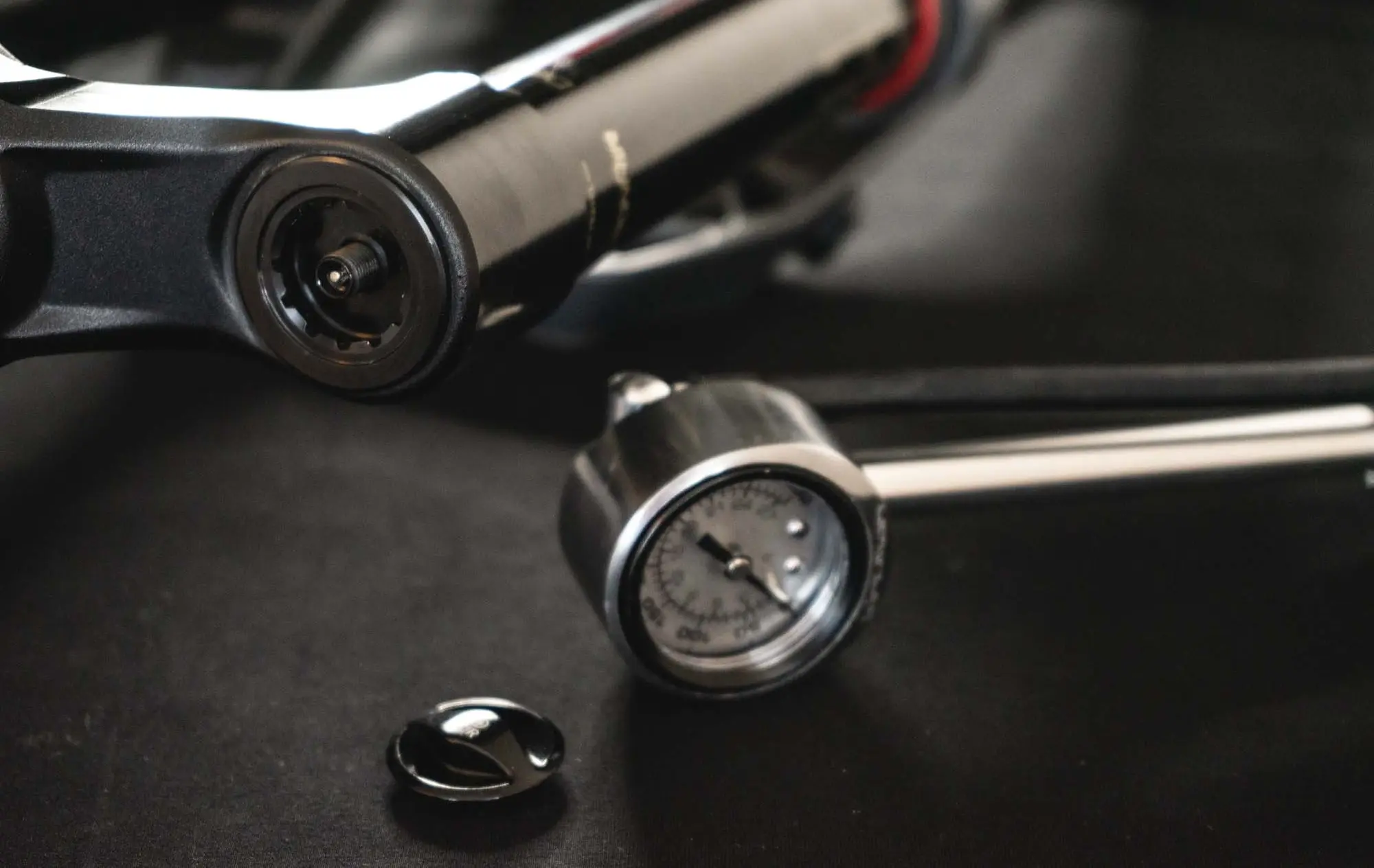
What about mountain bike PSI on your mountain bike ….
When it comes to mountain biking, having the right air pressure in your suspension parts and tires can make a huge difference in your ride quality and performance. The mountain bike PSI unit, or pounds per square inch, is the standard unit used to measure air pressure in these components.
Air pressure in your fork
One of the most important parts of a mountain bike to pay attention to when it comes to air pressure is the fork. The fork is the front suspension component that helps absorb impacts from bumps and obstacles on the trail. The air pressure in the fork should be set according to the rider’s weight and riding style. A general rule of thumb is to start with the recommended mountain bike psi (air pressure) as indicated by the manufacturer and then adjust as needed based on your own preferences. You can also use SAGLY, which has all factory recommendations of all manufacturers integrated. In this way you will save time and you do not have to look up this information in the internet.
The shock is also important
Another important component to consider is the rear shock. The rear shock is the part of the bike that helps absorb impacts from the rear wheel. Like the fork, the mountain bike psi (air pressure) in the rear shock should be set according to the rider’s weight and riding style. A good starting point is to use the recommended air pressure indicated by the manufacturer, and then adjust as needed.
And of course tires …
Tires also play a crucial role in the air pressure. The air pressure in mountain bike tires should be set according to the rider’s weight and the type of terrain being ridden. A general rule of thumb is to start with the recommended air pressure as indicated by the manufacturer and then adjust as needed based on your own preferences and the terrain. What makes finding the right air pressure for your tires easier is to use SAGLY’s tire pressure calculator. This feature calculates the right air pressure for you based on your body weight, terrain preference and tire carcass model.
The effects of changes in mountain bike PSI
It’s important to note that lower air pressure will result in a softer ride, while higher air pressure will result in a stiffer ride. So, if you’re looking for a softer ride, you may want to experiment with lower air pressure in your suspension parts and tires. On the other hand, if you’re looking for a stiffer ride, you may want to experiment with higher air pressure.
In summary
In summary, the PSI unit is used to measure air pressure in mountain bike suspension parts and tires. The air pressure in these components should be set according to the rider’s weight and riding style, with a good starting point being the recommended air pressure indicated by the manufacturer. It’s important to experiment with different air pressures to find the right balance between a soft and stiff ride. To set up all those air pressures right, a very great tool is SAGLY. SAGLY helps you to document, tune and compare your mountain bike settings. Download here.
Download SAGLY, a complete mobile guide for your mountain bike riding, suspension settings and maintenance.

